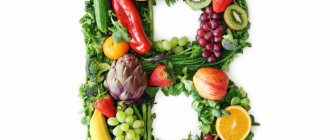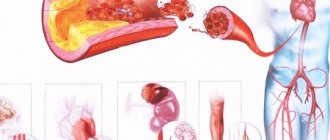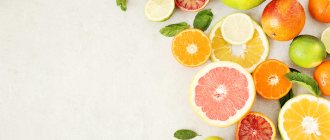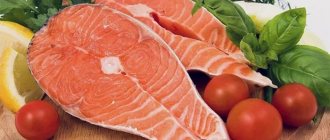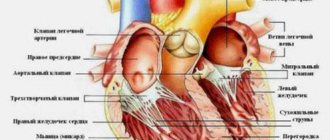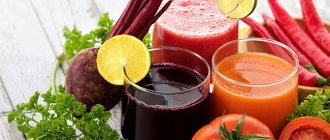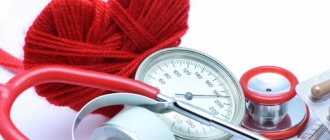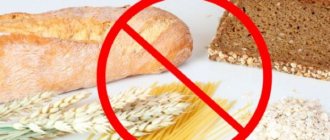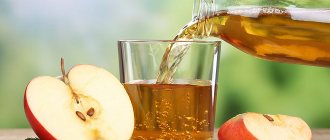In this article we will tell you:
- Liver and its functions
- Foods for liver restoration
- Foods harmful to the liver
- Useful recipes for liver restoration
- Best Foods for the Liver
Modern realities are such that, in most cases, the human diet is depleted of healthy foods. And if we add to this a passive lifestyle and the habit of taking medications or dietary supplements at every opportunity, then we greatly offend our liver.
The liver processes everything you eat and drink and turns nutrients into energy for your body. It filters harmful substances, such as alcohol, from your blood and helps your body fight infection. Alarm bells can be painful sensations in the right side or hypochondrium, which are of a different nature and intensify with active physical activity.
An interesting phenomenon is that with liver damage, a person may not feel anything at all. Below we tell you how to recognize the symptoms of poor work and what lifestyle to choose.
Liver and its functions
The liver is a gland that plays a fundamental role in digestion. The liver produces bile, a necessary enzyme for digesting fats. Bile is contained in the gallbladder and enters the duodenum through the bile ducts after each meal.
In addition to producing bile, the liver also performs other functions:
- Nutrient Metabolism
, entering the body through the digestive tract, is a necessary process for organic absorption.
- Absorption and metabolism of bilirubin
: Bilirubin is formed as a result of the breakdown of hemoglobin. Iron released from hemoglobin is stored in the liver or bone marrow and is used to form the next generation of blood cells.
- Blood clot support
: Vitamin K is needed to create certain coagulants that help blood clot. Bile is necessary for the absorption of vitamin K and is produced in the liver. If the liver does not produce enough bile, clotting does not occur.
- Carbohydrate metabolism
. Carbohydrates are stored in the liver, where they are broken down into glucose and pumped into the bloodstream to maintain normal glucose levels. They are stored as glycogen and are released whenever a quick burst of energy is needed.
- Storing vitamins and minerals
: The liver stores vitamins A, D, E, K and B12. In some cases, vitamins are kept as a reserve for several years. The liver stores iron from hemoglobin in the form of ferritin, ready to produce new red blood cells. The liver also stores copper.
- Helps digest proteins
: Bile helps break down proteins for digestion.
- Filters blood
: The liver filters and removes compounds from the body, including hormones such as estrogen and aldosterone, as well as compounds from outside the body, including alcohol and other drugs.
- Immunological function
: The liver is part of the mononuclear phagocyte system. It contains a large number of Kupffer cells, which are involved in immune activity. These cells destroy pathogens that can enter the liver through the intestines.
- Albumin production
. Albumin is the most abundant protein in blood serum. It transports fatty acids and steroid hormones to help maintain proper blood pressure and prevent leaking blood vessels.
- Angiotensinogen synthesis
: This hormone increases blood pressure by constricting blood vessels when it is affected by the enzyme renin in the kidneys.
Detoxification is another of the main functions of the liver. It is the liver that neutralizes the consequences of an unhealthy lifestyle and unfavorable environment. Today, toxic effects occur not only from inhaled air and tap water. Dental fillings, cosmetics, plastic windows and batteries, seafood and meat products, fruits and vegetables also contain toxic substances. The overall toxic effect consists of four points:
- Physical impact
. Injury, inflammation, excessive exercise.
- Nutrient toxins
. Preservatives, pesticides, hormones, alcohol, trans fatty acids.
- Infectious impact
. Bacteria, fungi, parasites, viruses.
- Chemical exposure (xenobiotics, organic compounds)
. Volatile organic substances (VOCs) are very dangerous products with toxic properties. Xylene, benzene, ethylbenzene, trichloroethane, etc. are constantly present in city air. But the source of the greatest exposure to volatile organic substances (solvents) is home air. The concentration of VOCs in indoor air is 10 times higher than outdoors! Those same carpets contain dozens of types of VOCs and about 12 pesticide components.
The liver doesn't just filter toxins from the blood; it converts them into harmless compounds that are eliminated naturally. But under heavy load, the liver does not have time to cope with the work, and toxins begin to accumulate, which inevitably affects well-being.
Liver dysfunction entails:
- Amino acid metabolism disorders
. Impaired liver function can lead to ammonia accumulation and a number of serious diseases.
- Lipid metabolism disorders, increased or decreased cholesterol, impaired bile acid metabolism
.
- Decreased synthesis of gamma globulin, the main supplier of antibodies
.
- Decreased synthesis of transport proteins, which may also be the cause of anemia
.
- Disorders in carbohydrate metabolism
. Since the liver absorbs most of the carbohydrates absorbed in the intestines and ensures stable blood sugar due to the breakdown of glycogen.
- Hormonal disorders
. When the liver is damaged, the hormones of the adrenal glands, thyroid gland, and sex hormones are not utilized. The liver is associated with the synthesis of adrenaline, norepinephrine and dopamine, as well as tyrosine. So our performance and mood directly depend on the liver.
- Vitamin metabolism disorders
. The absorption of vitamins, moreover, largely depends on the quantity and quality of secreted bile.
- Metabolism of microelements
. The liver contains and regulates the metabolism of iron, copper, zinc, manganese and molybdenum. With liver problems, the reserves of microelements are quickly depleted, and an excess of them in the blood may occur, which leads to the development of serious disorders.
- Enzyme metabolism
. The liver synthesizes all enzymes, including energy metabolism. Therefore, low levels of energy and health are directly related to liver dysfunction.
The liver is quite resistant to external irritants and is able to recover (renew) after damage or an inflammatory process. She can completely regenerate even if only 25 percent of the tissue remains. One of the most impressive aspects of this feat is that the liver can grow back to its previous size and capabilities without losing function during the growth process.
In mice, if two-thirds of the liver is removed, the remaining liver tissue can grow back to its original size within 5-7 days. In humans, the process takes a little longer, but regeneration can still occur in 8-15 days—an incredible achievement given the size and complexity of the organ.
Over the next few weeks, the new liver tissue becomes indistinguishable from the original tissue.
However, increasing the load on it may disrupt the update process.
An irregular and unbalanced diet (fatty foods, fried foods, smoked foods) has a harmful effect. The liver suffers from uncontrolled use of antipyretic and painkillers. Liver damage is caused by infectious diseases, such as viral hepatitis, as well as metabolic disorders.
When the liver, for one reason or another, can no longer restore its tissues, its destruction begins. Due to cell damage, liver functions are impaired and liver failure develops. Damage can lead to fatty deposits (fatty liver), liver inflammation. It is possible for normal liver tissue to turn into connective (scar) tissue.
Gradually, the liver becomes deformed, changes its structure, shape and ceases to neutralize toxins. The main danger of liver diseases is that the initial stage of the disease occurs without pain symptoms because there are no nerve endings in the liver.
Symptoms of liver dysfunction
:
- fatigue and weakness; loss of appetite;
- repeated bouts of nausea;
- pain in the right side;
- yellowness of the whites of the eyes and skin;
- bad breath;
- pungent odor of sweat;
- headache;
- dry skin;
- weight loss or inability to lose weight.
Causes of liver dysfunction
:
- alcohol;
- fried and fatty foods;
- consequences of drug use;
- obesity;
- hereditary disorders;
- genetic features of detoxification;
- stress;
- viral infections;
- autoimmune disorders;
- protein deficiency;
- deficiency of B vitamins, especially thiamine, B 12 and folic acid;
- deficiencies of vitamins and microelements involved in detoxification processes;
- chronic intoxication, overload with heavy metals, xenobiotics.
Safe sex
You need to protect yourself not only to avoid transmitting sexually transmitted infections to each other or to protect yourself from unwanted pregnancy. You need to protect yourself so as not to accidentally catch the hepatitis B or C virus, which is transmitted through unprotected sex. We have two news on this score: good and bad. Hepatitis C is successfully and quickly treated . Hepatitis B is not yet curable. So it makes sense to be vigilant.
Yes, this point is most likely for those who often change sexual partners. If you have decided on your other half for a long time and for a long time, do not hesitate to offer a hepatitis test. Go through it together to be confident in each other.
Nutrition for liver restoration
Proper nutrition for liver recovery can be ensured by wisely choosing foods.
- Complete protein – 1 gram per 1 kg of body weight.
- Fats – 1 gram per 1 kg of body weight, mainly vegetable. When treating obesity, reduce fat to 40 grams per day for the period of the treatment protocol (consultation with a specialist is required).
- Low-carbohydrate diet with “slow” carbohydrates.
Greens to prevent fat accumulation
Broccoli has been shown to help prevent fat accumulation in the liver in mice. Eating more greens such as spinach, Brussels sprouts and cabbage can also help with overall weight loss.
Avocado
Avocados are high in healthy fats, which contain chemicals that can slow liver damage. They are also rich in fiber, which can help with weight control.
Fish, coffee and walnuts
Two or more servings of oily fish per week have a beneficial effect on lipids and may reduce hepatic steatosis. Regular unsweetened filter coffee is associated with reduced severity of fibrosis in non-alcoholic steatohepatitis, and a handful of nuts a day improves liver function.
Coffee
Coffee increases antioxidant levels in the liver while reducing inflammation. It also reduces the risk of liver disease, cancer and fatty liver.
Targeted nutrition tips
that will increase your energy level by 10 out of 10
From TOP nutritionists of the MIIN
Get tips
Blueberries and cranberries
Blueberries and cranberries contain anthocyanins, antioxidants that give the berries their characteristic colors. Eating these fruits for 3-4 weeks protected the liver from damage. Additionally, blueberries helped boost immune cellular responses and antioxidant enzymes.
Cruciferous vegetables
Cruciferous vegetables such as Brussels sprouts, broccoli and mustard greens are known for their high fiber content and distinctive flavor. They are also rich in beneficial plant compounds. Cruciferous vegetables increase natural liver detoxification enzymes, help protect the liver from damage and increase liver enzyme levels in the blood.
Porridge
In order to normalize the functions of the liver and gastrointestinal tract, it is recommended to eat porridge. Among the most useful for these purposes are millet and buckwheat cereals. Millet porridge contains natural antioxidants, due to which it accelerates the process of removing metabolic products. Buckwheat, rich in vitamins and minerals, will stabilize liver function.
Eggs and sunflowers
They are a source of lecithin and sulfur.
Beverages
Green tea
contains antioxidants, improves the absorption of vitamins and microelements in the body, and therefore has a beneficial effect on the functioning of the kidneys, central nervous system and blood circulation. Adding honey or lemon in small quantities to green tea will only enhance its benefits.
Chicory
promotes the removal of toxins and waste from the blood, improves metabolism, and reduces cholesterol levels. Drinking drinks based on it will help improve appetite, get rid of heaviness in the stomach and heartburn.
Coffee
Increases antioxidant levels in the liver while reducing inflammation. It also reduces the risk of liver disease, cancer and fatty liver.
Chamomile
. Its decoction has long been used as an antispasmodic and analgesic. Chamomile tea is used for gallstone disease. To avoid allergic reactions, you should limit yourself to 1-2 cups of drink per day.
Beet juice
Protects the liver from oxidative damage and inflammation while increasing its natural detoxification enzymes.
Sample menu for 7 days
For convenience, a sample menu has been compiled for each day of the week, which will help you navigate and adjust the dishes to your tastes.
Monday
- Breakfast - egg white omelette, a cup of green tea, oatmeal cookies;
- Lunch - carrot soup, a couple of steamed turkey cutlets, chamomile tea;
- Afternoon snack - vegetable salad;
- Dinner - steamed sea bass, baked beets, dried apple compote.
Tuesday
- Breakfast - a glass of natural yogurt, bread, dried fruit compote;
- Lunch - pumpkin soup, rye bread crackers, herbal decoction;
- Afternoon snack - a glass of kefir;
- Dinner - stewed rabbit meat with a side dish of vegetables, carrot juice.
Wednesday
- Breakfast - millet porridge, a cup of green tea, dry cookies;
- Lunch - boiled rice with vegetables, bread, dried apricot compote;
- Afternoon snack - two apples;
- Dinner - zucchini casserole, herbal tea, a couple of slices of rye bread.
Thursday
- Breakfast - oatmeal with banana, a glass of green tea;
- Lunch - vegetable broth, diet bread, chicory drink;
- Afternoon snack - one banana, oatmeal cookies, a glass of chamomile tea;
- Dinner - steamed trout with sour cream, mashed potatoes, dried fruit compote.
Friday
- Breakfast - cottage cheese casserole, fruit compote;
- Lunch - celery soup, diet bread, chamomile tea;
- Afternoon snack - fruit salad, green tea;
- Dinner - vegetable casserole, a slice of black bread, carrot juice.
Saturday
- Breakfast - millet porridge, dry cookies with cranberries, a glass of tea;
- Lunch - carrot and pumpkin soup, a couple of slices of dried bread, compote;
- Afternoon snack - a glass of yogurt;
- Dinner - buckwheat porridge with vegetables, chamomile infusion.
Sunday
- Breakfast - oatmeal with pumpkin, a cup of tea, biscotti;
- Lunch - chicken broth with vegetables, a slice of black bread, compote;
- Afternoon snack - two bananas, carrot juice;
- Dinner - baked hake, mashed potatoes, chamomile tea.
Foods harmful to the liver
- Alcohol
. Alcohol is a leading cause of fatty liver disease as well as other liver diseases.
- Added sugar
. Stay away from sugary foods such as candy, cookies, soda and fruit juice. High blood sugar increases the amount of fat in the liver.
- fried food
. It is high in fat and calories.
- Salt
. Eating too much salt can hold your body in excess water. Limit your sodium intake to 1,500 mg per day.
- White bread, rice and pasta
. White color usually means the flour is well processed, which can cause higher blood sugar levels than whole grains due to the lack of fiber.
- Red meat
. Pork and deli meats are high in saturated fat.
